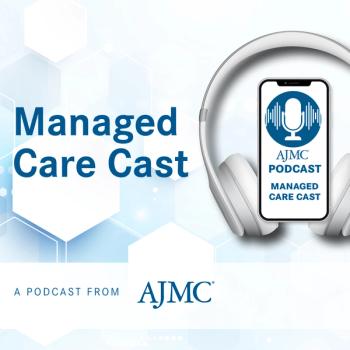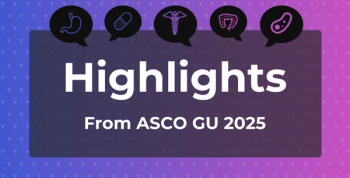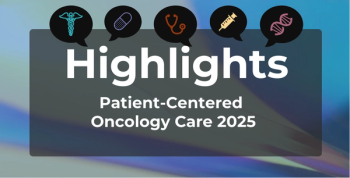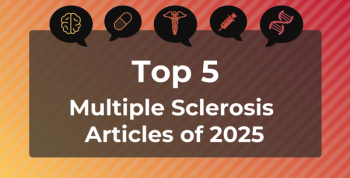
Breaking Down Barriers to Hepatitis Elimination on World Hepatitis Day 2025
World Hepatitis Day 2025 and its theme, “Hepatitis: Let’s Break It Down,” emphasize the urgent need to remove barriers to prevention, testing, and treatment to reduce liver cancer and eliminate hepatitis by 2030.
Monday, July 28, marks World Hepatitis Day, themed “Hepatitis: Let’s Break It Down,” which calls for urgent action to dismantle financial, social, and systemic barriers to eliminating
World Hepatitis Day is
Understanding the Different Hepatitis Types
There are 5 main strains of the
In more serious cases, hepatitis infections may lead to chronic liver disease, which can progress to cirrhosis, liver cancer, and death. Hepatitis B and C are the most common causes of liver cirrhosis, liver cancer, and viral hepatitis-related deaths globally. About 354 million people are living with chronic hepatitis B or C, yet most lack access to testing and treatment.
Other hepatitis types can also lead to complications. Hepatitis D occurs only in people already infected with hepatitis B, and dual infection can result in more serious disease and poorer health outcomes, including an accelerated progression to cirrhosis. Meanwhile, hepatitis E typically begins with flu-like and gastrointestinal symptoms, which may progress to jaundice, liver tenderness, and, in rare cases, acute liver failure.
Vaccines are available to prevent hepatitis A, B, and E. The hepatitis B vaccine also protects against hepatitis D and, when administered at birth, greatly reduces mother-to-child transmission. Chronic hepatitis B can be treated with antivirals to slow disease progression, but not all infected individuals require treatment.
There is currently no vaccine for hepatitis C, but over 95% of infections can be cured with antiviral medications. Despite this, global access to diagnosis and treatment remains limited. In addition, hepatitis A, which is most common in low- and middle-income countries due to the higher risk of food and water contamination, is largely preventable with a vaccine. Most infections are mild, with many patients recovering fully and developing lasting immunity.
Breaking Down Barriers to End Hepatitis
This year’s World Hepatitis Day theme, “Let’s Break It Down,”
“The campaign is a reminder that we must act now to expand access, integrate care, and end hepatitis as a public health problem by 2030,” the WHO states on its website.
The WHO spotlights 3 critical issues. First, hepatitis is a leading cause of liver cancer and a growing global killer. Chronic viral hepatitis causes 1.3 million deaths annually, mostly from liver cancer and cirrhosis. Despite them being preventable and treatable, there are 6000 new hepatitis B and C infections daily, with the disease burden continuing to rise, especially in regions with limited care access.
Second, the WHO adds that knowing one's status is the first step to stopping liver cancer, as most people living with hepatitis are unaware of their infection. Therefore, testing and early diagnosis are considered critical to ending hepatitis because they allow individuals to access life-saving treatment and prevent liver cancer.
Lastly, the WHO emphasizes that hepatitis elimination is within reach if countries act now. Although there are vaccines, curative therapies, and proven tools to stop transmission, most cases go undiagnosed until it is too late. Because of this, the organization calls on countries to commit to ending the disease through smart investment and public health systems that embed hepatitis services into primary care.
Strategic Priorities for Hepatitis Elimination
The WHO has made several calls to action directed at the public, policymakers and governments, and national health authorities. It has instructed the public to get tested for hepatitis B and C and to vaccinate newborns with the hepatitis B birth dose within 24 hours. Individuals also are encouraged to talk with their health care provider about early testing and treatment. They should also learn the facts about hepatitis and help stop stigma by sharing accurate information.
In addition, the WHO has asked policymakers and governments to lead and fund awareness campaigns that link hepatitis care to liver cancer prevention, as well as to expand hepatitis B birth-dose vaccination, safe blood and injection practices, and harm reduction strategies.
The organization also highlights the need for more affordable, decentralized testing and treatment services integrated into primary care across health platforms. Consequently, the WHO suggests embedding hepatitis services in universal health coverage and national insurance schemes, engaging all stakeholders, and investing in strong data systems for accountability.
Lastly, the WHO recommends that national health authorities prioritize early diagnosis and treatment, focusing on high-burden and underserved communities. To do so, authorities should decentralize services to primary and district health centers, integrate hepatitis prevention into maternal and child health programs, ensure free or universal access to testing and treatment, mobilize sustainable funding, and use data to drive progress.
To learn more about World Hepatitis Day efforts to break down barriers and stigma preventing hepatitis elimination and liver cancer prevention, tune into the WHO’s global hepatitis
“This global webinar will include high-level ministerial remarks, presentations, and panel discussions,” the WHO shared online. “It will provide spotlights and country progress from communities and partners, as well as effective and innovative public health strategies to scale up country responses to reach the 2030 hepatitis elimination targets.”
References
- World Hepatitis Day. World Health Organization. Accessed July 25, 2025.
https://www.who.int/campaigns/world-hepatitis-day - World Hepatitis Day 2025. World Health Organization. Accessed July 25, 2025.
https://www.who.int/campaigns/world-hepatitis-day/2025 - Hepatitis. World Health Organization. Accessed July 25, 2025.
https://www.who.int/health-topics/hepatitis - Key messages. World Health Organization. Accessed July 25, 2025.
https://www.who.int/campaigns/world-hepatitis-day/2025/key-messages - Global hepatitis webinar – let’s break it down! World Health Organization. Accessed July 25, 2025.
https://www.who.int/news-room/events/detail/2025/07/28/default-calendar/global-hepatitis-webinar-let-s-break-it-down!
Newsletter
Stay ahead of policy, cost, and value—subscribe to AJMC for expert insights at the intersection of clinical care and health economics.







































